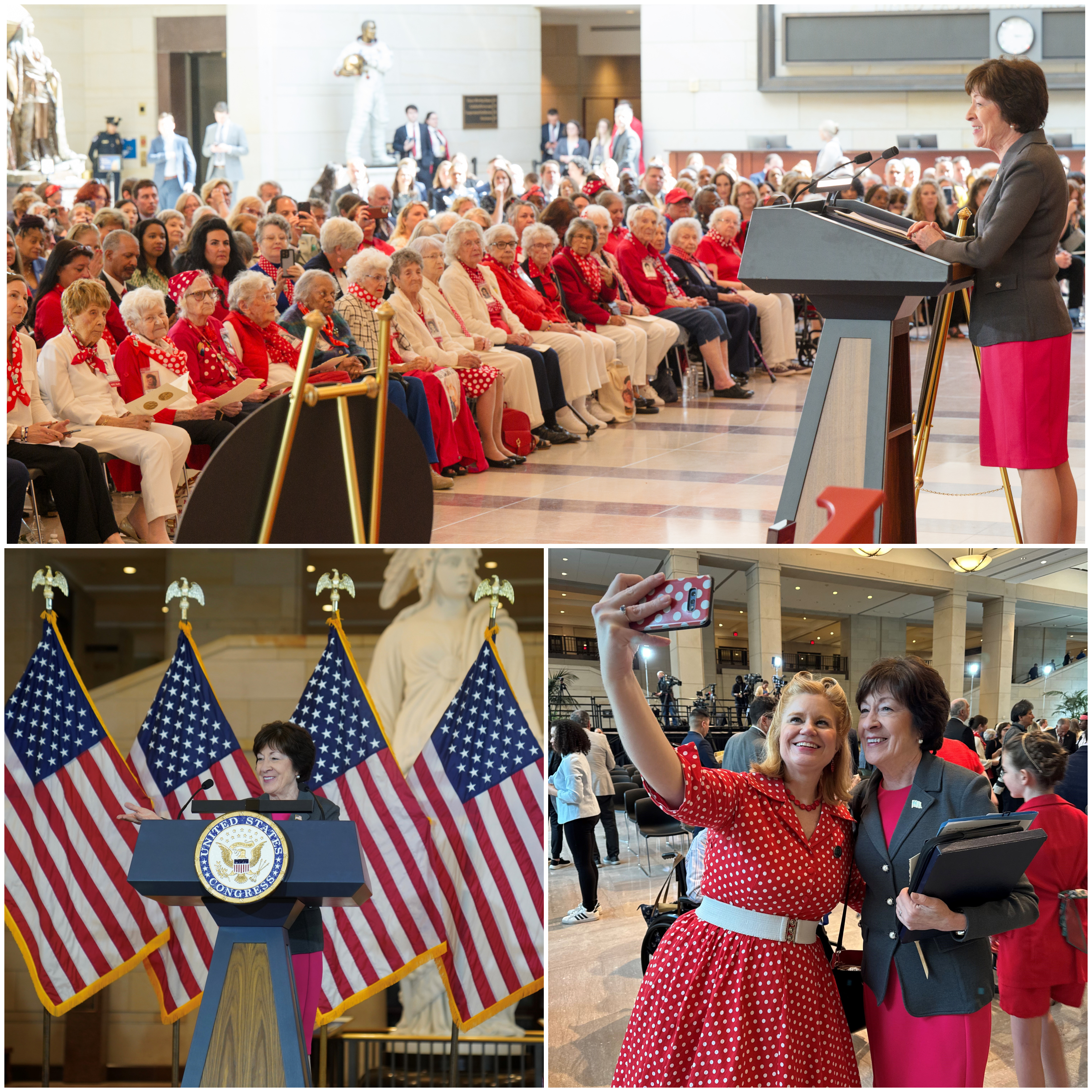Senator Collins Honors “Rosies” at “Rosie the Riveter” Congressional Gold Medal Ceremony

Click HERE, HERE, and HERE for individual high-resolution photos.
Washington D.C. – U.S. Senator Susan Collins was honored to present the Congressional Gold Medal to the women of WWII, or the “Rosies,” at the “Rosie the Riveter” Congressional Gold Medal Ceremony, held in Emancipation Hall at the U.S. Capitol. She joined Speaker of the House, Mike Johnson, and other members of Congress for this historic event. The Congressional Gold Medal is a reality for these women because of a bipartisan, bicameral bill Senators Collins and Bob Casey (D-PA) authored.
During her remarks, Senator Collins shared the story of the Maine women who worked industrial jobs making supplies and defense equipment during WWII. 3,700 of these women worked as welders, mechanics, and crane operators in South Portland to build 274 Liberty ships for the U.S. Navy. An additional 1,600 women worked in Bath to build over 80 ships.
“At a time of great peril for freedom here at home and around the world, an estimated 16 million women stepped forward to learn new skills and to produce the battle ships, war planes, and equipment required by our troops to win the war,” Senator Collins said. “Mothers, wives, sisters, and daughters answered our nation’s call to action by working tirelessly in factories, farms, shipyards, aircraft, plants and steel mills in support of our Armed Forces.”
During the event, the “Rosies” accepted the Congressional Gold Medal, which is the oldest and highest civilian award in the United States awarded by Congress. Only 185 people, events, or institutions have been awarded the distinction.
The percentage of women in the workforce jumped from 27 percent to nearly 37 percent between 1940 and 1945. By the time the war ended, nearly one out of every four married women worked outside the home. These “Rosie the Riveters” took positions across various industries, but the aviation industry saw the biggest increase of female workers – with more than 310,000 working in the aircraft industry in 1943, representing 65 percent of its workforce.
Click here and here to read more.
###